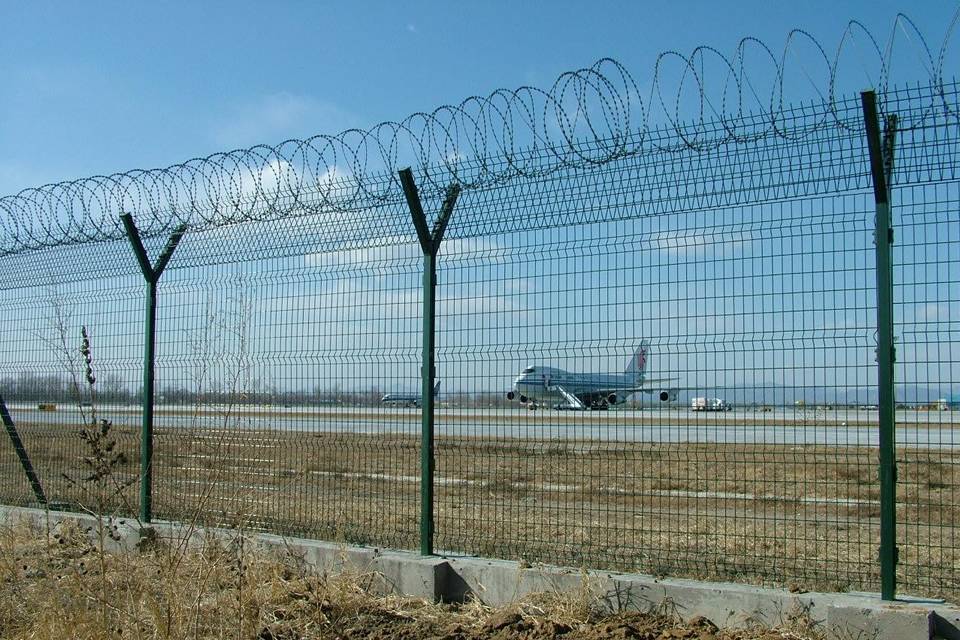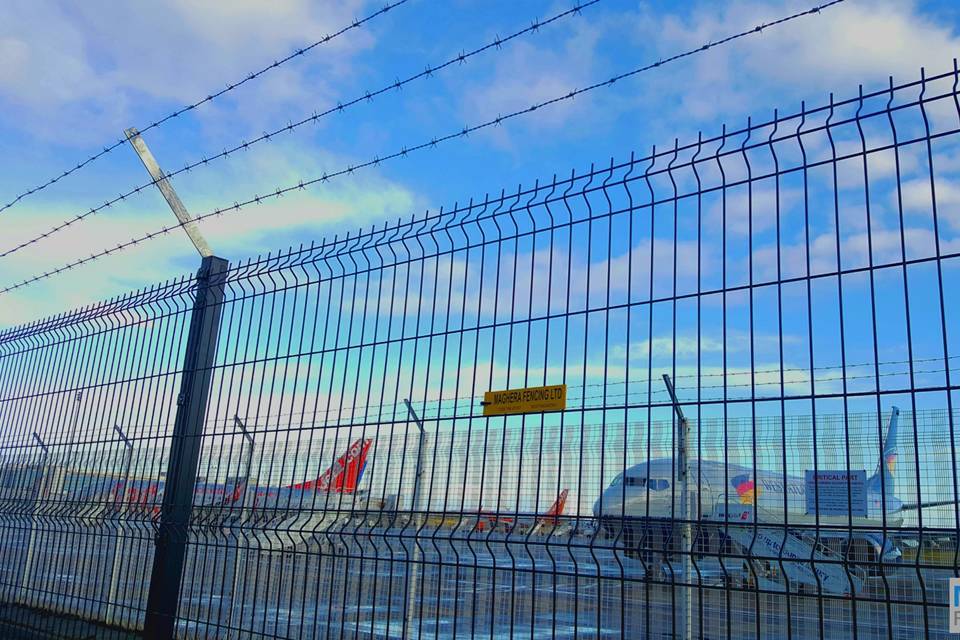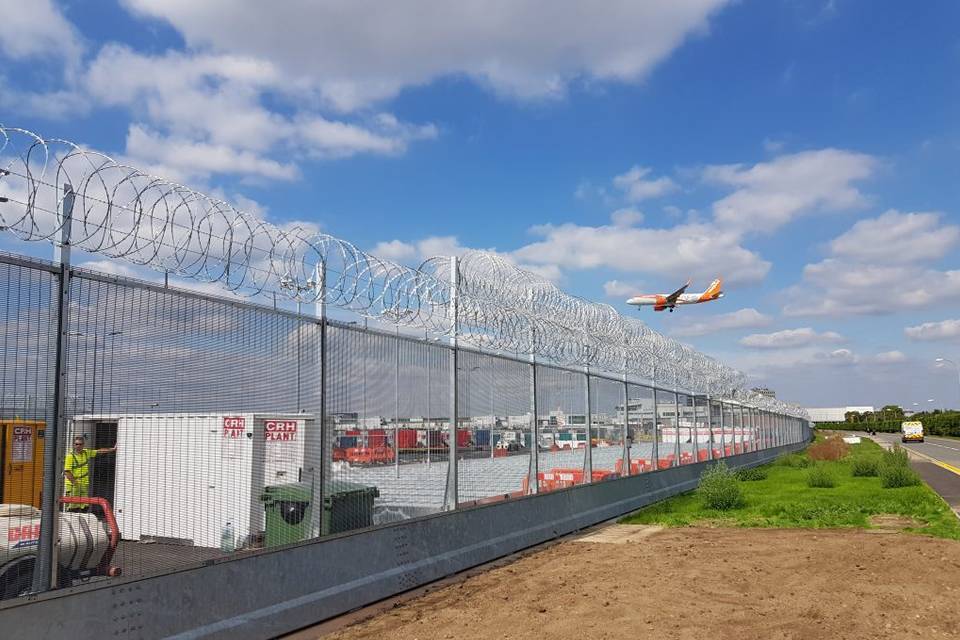Don't miss our holiday offer - 20% OFF!
The Role of Airport Fencing in Preventing Wildlife Intrusions and Enhancing Runway Safety
Airport fencing plays a crucial role in preventing wildlife intrusions that threaten aircraft operations and runway safety. Discover how advanced perimeter solutions protect lives, reduce wildlife strikes, and comply with global aviation standards.
Introduction
Airports’ security levels are believed to be some of the best in the world’s infrastructure. Although aviation security measures are strict, wildlife posing in or around runways is not commonly an observed threat to aviation. A regular entry of birds and mammals into the runway area leads to accidents, operational disruption, and recurring near misses. To mitigate this risk, airport fencing has evolved beyond a simple perimeter barrier into a comprehensive wildlife deterrent solution. This article explores how airport fencing systems contribute significantly to preventing wildlife intrusions and ensuring the safety of aircraft operations.

Wildlife Intrusion: A Serious Aviation Concern
Implications of bird and mammal interaction with airplanes are dire for the aviation industry. Statistics from aviation safety reports indicate numerous wildlife strikes every year, which disemburse the industry millions of dollars whenever. Frequently spotted on runways are deer, boars, foxes, dogs and reptiles due to inefficient fences or lax perimeter controls.
Wildlife incursions can potentially result in anything, from temporary hold ups to devastating effects. Ingestion by aircraft engines of wildlife is a major hazard due to regular engine failures. In order to neutralize these threats, airport administrators make perimeter-fencing strong and secure a priority.
How Airport Fencing Prevents Wildlife Intrusions
Airport fencing is designed not just to define boundaries but also to serve as a robust line of defense against unauthorized access by animals. Specific design elements are recognized to have a major role to play in improving the effectiveness of the airport fencing:<<
Height and Structure
Fences are effective defenses against large mammals if they both have high height and stability. Most wildlife intrusion fences are constructed of a height of 2.5 to 3m. The great height of the fence does not allow deer to jump over and a strong underwater foundation prevents lightweight animals from rabbits and foxes from digging up.
Material Strength and Durability
Use of high tensile mesh or welded wire panels ensures that no animal has the ability of chewing or pushing its way through the barrier. Material such as galvanized steel or powder coated finishes are selected due to its better weather resistant and longer service life against corrosion.
Anti-Climb and Anti-Dig Features
Safety features such as close mesh spacing and wires at an outwards angle at the top of the zone, are common in fence construction. Some of the fence is buried or held up by a concrete foundation to prevent digging. These construction components are very effective at deterring airborne and land borne intruders.
International Standards and Guidelines for Airport Fencing
Regulatory bodies like the International Civil Aviation Organization (ICAO) and the Federal Aviation Administration (FAA) provide strict guidelines for airport fencing and wildlife management.
ICAO recommends that airport fencing be strong as well as effective in maintenance to reduce cases of wildlife penetration especially in areas where strikes had happened before. The FAA has released guidelines suggesting that airports build out systems of fencing specifically configured to exclude animals that they pose a threat to in their particular area.
These standards are important for safety reasons and are also compulsory for airports to receive insurance and government financial aid.
Integration with Wildlife Monitoring Systems
Modern airport fencing is increasingly integrated with technology-driven wildlife management systems. These include:
- An interlink of camera systems that observes the perimeter for animal activity.
- Motion sensors that alert the security members when there is sudden activity within the next area.
- Noise producing devices were employed on the fencing to deter animal intrusion.
- Drones that hover in the air to observe fencing and outside wild-life spaces.
- Combined, this sophisticated technology and old barriers provide all-purpose protection, protecting from breaches of wildlife.

Case Studies: Airport Fencing in Action
JFK International Airport, New York
Following several incidents involving the airport’s wildlife, JFK Airport erected a reinforced steel mesh fence along its perimeter above and below ground. Resultantly, we recorded reduced runway animal disturbances and hence improved both safety standards and operational performance.
Heathrow Airport, London
His Heathrow’s installation was based on anti-climb high walls with an embedded base together with a special team dealing with the hazard of wildlife. This approach has been extremely successful and wildlife intrusions have become rare into the airport.
Changi Airport, Singapore
Changi has fitted its fencing with infrared cameras and sensor alerts thus after real time monitoring it detects fence failures before animals enter.
Benefits of Wildlife-Resistant Airport Fencing
Enhance Safety for Aircraft and Travellers
By reducing these wildlife strikes with safe fencing, airports guarantee both safety gains and accident reduction linked to incidents.
Compliance with Global Regulations
Through proper fencing airports can maintain their compliance to aviation rules and avoid in their operations adverse interruptions because of legalities.
Cost Saving on Repair Delays
Engines and aircraft systems are at greatest risk of incurring serious financial damage from being struck by wildlife. Fencing with the right strategy saves the company resources in terms of repair and prevents risks of service interruptions.
Improved Operational Efficiency
Flight safety is ensured on runways and taxiways, in this way ensuring flight timings are reliable and increased satisfaction levels on airlines and passengers.
Choosing the Right Airport Fencing System
When selecting airport fencing for wildlife prevention, decision-makers should consider:
Local Wildlife Profile
Different regions face different threats. Airport fencing should be guided by local wildlife patterns in selection and design.
Weather Conditions
Materials for fences should be selected according to their resistance to specific peculiarities of local weather (snow-covered, humid, windy).
Maintenance and Inspection Needs
Easiness of managing fences goes a long way in ensuring long term effectiveness and security.
Integration with Airport Security
Interconnection of the fencing system with existing surveillance, access control, and emergency response networks is necessary.

Future Trends in Airport Fencing
As the nature of risk changes, so the defenses that need to be put in place will change with it. The future of airport fencing lies in smart infrastructure. Some emerging trends include:
AI-based Perimeter Monitoring
Sophisticated software can tell the difference between risking wildlife and risking people which makes the alarms more reliable.
Eco-Friendly Fencing Materials
Sustainable fences created using recycled or bio-friendly materials have gained greater traction, even airport spots in ecological hotspots.
Modular Fencing Solutions
Mobile modular components of flexible fencing facilitate rapid deployment while accommodating changes that help drive growth of airport facilities.
Conclusion
The frequent intrusions of wildlife in airports therefore require immediate response. Well constructed and effective airport fencing would be a significant deterrent to animal accidents with enhanced safety in general. Such fences are more than perimeter security– they also add to runway safety, compliance with regulations, and operational success.
Investing in wildlife-resistant airport fencing is not just a safety measure but a strategic move toward long-term efficiency and global aviation leadership.
